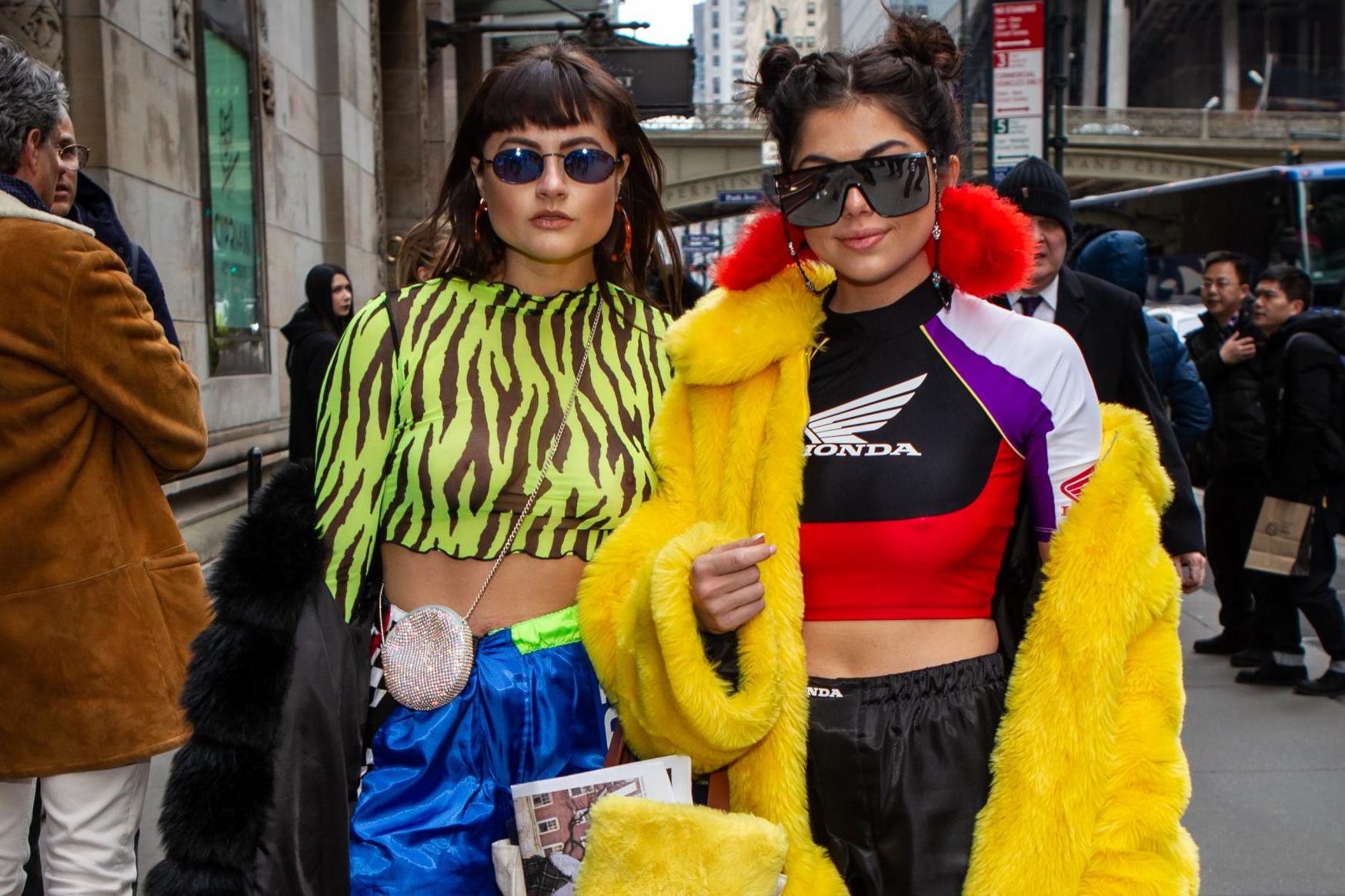Fur debate: Are faux alternatives more sustainable than the real thing?
Animal rights activists say real fur is cruel but environmentalists argue that faux fur is harming the environment, Olivia Petter reports


Your support helps us to tell the story
From reproductive rights to climate change to Big Tech, The Independent is on the ground when the story is developing. Whether it's investigating the financials of Elon Musk's pro-Trump PAC or producing our latest documentary, 'The A Word', which shines a light on the American women fighting for reproductive rights, we know how important it is to parse out the facts from the messaging.
At such a critical moment in US history, we need reporters on the ground. Your donation allows us to keep sending journalists to speak to both sides of the story.
The Independent is trusted by Americans across the entire political spectrum. And unlike many other quality news outlets, we choose not to lock Americans out of our reporting and analysis with paywalls. We believe quality journalism should be available to everyone, paid for by those who can afford it.
Your support makes all the difference.Fur has always been one of the most incendiary topics in the fashion industry, but the debate has reached new heights in recent months as an increasing number of labels implement bans on using animal skins in their clothing.
The ethical issues of using animal fur for clothing are well-documented, and while it might’ve once been considered uber glamorous to glide down the street in a fluffy mink coat like a 1930s Hollywood starlet, doing so now would be seen as a sartorial cause célèbre. Also, an activist might pour a bucket of fake blood on you, which is probably not much fun either.
Gucci, Burberry and Coach are just a few of the numerous high-profile brands that have now banned fur. London Fashion Week also announced it would be going entirely fur-free in September 2018, subsequently fuelling the demand for faux alternatives that have been popularised by playful, millennial-focused brands such as Shrimps and Charlotte Simone.
But environmentalists claim that these cruelty-free substitutes are made almost entirely from plastic and are causing serious harm to the planet.
This propagates a “damned if you do, damned if you don’t” narrative around fur, which puts shoppers in a difficult position: do the environmental consequences of faux fur outweigh the ethical implications of real fur? Or is it time for fashion fans to move away from a fur-based aesthetic altogether and champion materials that carry less emotional baggage?
Fur farming has been banned in England and Wales since 2000 – Scotland and Northern Ireland followed suit in 2002 – but it remains legal to import and sell fur from species such as fox, rabbit and chinchilla, most of which are produced by European farmers.
And despite what we know about animal welfare (furs sold in the UK have either been farm reared, or trapped and killed) it continues to be in-demand. In 2017, Britain imported £63m worth of fur and items with fur, a governmental report states.
Despite countless brands going fur-free, many, such as Fendi, Louis Vuitton and Miu Miu, continue to use it in their collections.
Newer labels are using it too, such as Scandinavian label Saks Potts, whose vintage-inspired fox fur coats are a firm favourite among celebrities such as Selena Gomez and Lady Gaga.
Mark Oaten, chairman of the International Fur Federation (IFF), tells The Independent he believes fur can be ethically sourced and is significantly more sustainable than faux alternatives.
“It’s a totally natural product, it is bio-degradable and in the case of wild fur it comes from conservation and population management projects,” he says, adding that designers such as Gucci and Burberry have “jumped on a vegan and animal rights bandwagon” by banning fur.
He adds that the IFF is in the process of developing a global certification programme called Furmark that aims to give brands and consumers confidence in the welfare of animals with regards to fur farming.
Comments such as Oaten’s are heavily disputed among animal rights campaigners, who argue that the fur industry is attempting to “greenwash” itself amid the rising popularity of faux fur.
“Fur is only ‘natural’ when it’s on a live animal’s back,” says Claire Bass, executive director at Humane Society International.
Bass argues that fur production poses its own environmental threats.
“There’s water pollution in the form of nitrogen and phosphorus from animal waste,” she tells The Independent, “air pollution from incinerating animal carcasses and releasing pollutants such as carbon monoxide, nitrogen oxides, sulphur dioxide and hydrochloric acid.”
There is also a “cocktail of toxic chemicals” used in the tanning and dressing process, Bass adds.
Describing the fur industry as sustainable has, in fact, proven controversial in the past. In 2012, an ad campaign by the European Fur Breeders’ Association was banned because it claimed it was “eco-friendly to wear fur” because it “lasts a lifetime” and “helps conservation”.
As for faux fur, Labour MP Mary Creagh is among those to have spoken out about the environmental threats the material poses, telling The Independent that fake fur coats are often made from synthetic fibres derived from fossil fuels that contribute to greenhouse gas emissions.
“Fashion tells us we can have anything we want, that we don’t want to kill animals to have our fur, but what they’re not telling us about is the carbon consequences of extracting the material for faux alternatives,” she said.
“These garments are made entirely out of artificial fibres like polyester that are a by-product of the petroleum industry.”
The Wakefield MP also said that faux fur garments were “almost impossible to recycle” and often end up in landfill due to the rise of fast fashion culture that means clothes are worn and then discarded to make room for the next trend.
But Bass claims that the faux fur industry is rapidly moving in a more sustainable direction, with more brands adopting innovative production techniques that reduce their carbon footprint.
New York-based brand House of Fluff, for example, makes the majority of its faux fur products from natural dyes and materials.
Speaking to The Independent, CEO Kym Canter explains that the label is committed to using “the most earth-friendly” materials possible.
“We are also working with scientists at Cradle to Cradle to produce a completely compostable faux fur textile,” she adds.
“Our garments are also very luxe and stylish, these are not coats you wear for a season and then discard, these are coats you will happily keep for a lifetime and then pass down.”
But she points out that the argument that fake fur is damaging the planet could be applied to the fashion industry as a whole and should not be limited to one section.
“Sadly, many of the garments we all wear are made from synthetic fibres that are not great for the planet,” she explains. “It will take all of us to reverse these issues and move forward. Let’s not confuse this issue or use it to distract people from issues of animal welfare.”
Celebrity stylist Anna Berkeley concurs that the criticisms surrounding faux fur are indicative of a systemic issue affecting the fashion industry.
“In the fast fashion sector, products are discarded and take years to bio-degrade,” she tells The Independent.
“I do not agree with farming and killing animals solely for fashion, but the industry needs to find a solution to the environmental impact of all fashion items.”
Whichever way we look at it, due to the fashion industry’s ephemeral trend circuit and widespread use of polyester fabrics, sustainability remains an ongoing issue, one that faux fur is a very small part of.
The government is urging the industry to address this and brands like Stella McCartney are setting an admirable example for others to follow.
But when it comes to animal fur, the problem may be much closer to being solved. And that’s undeniable progress.
Join our commenting forum
Join thought-provoking conversations, follow other Independent readers and see their replies
Comments